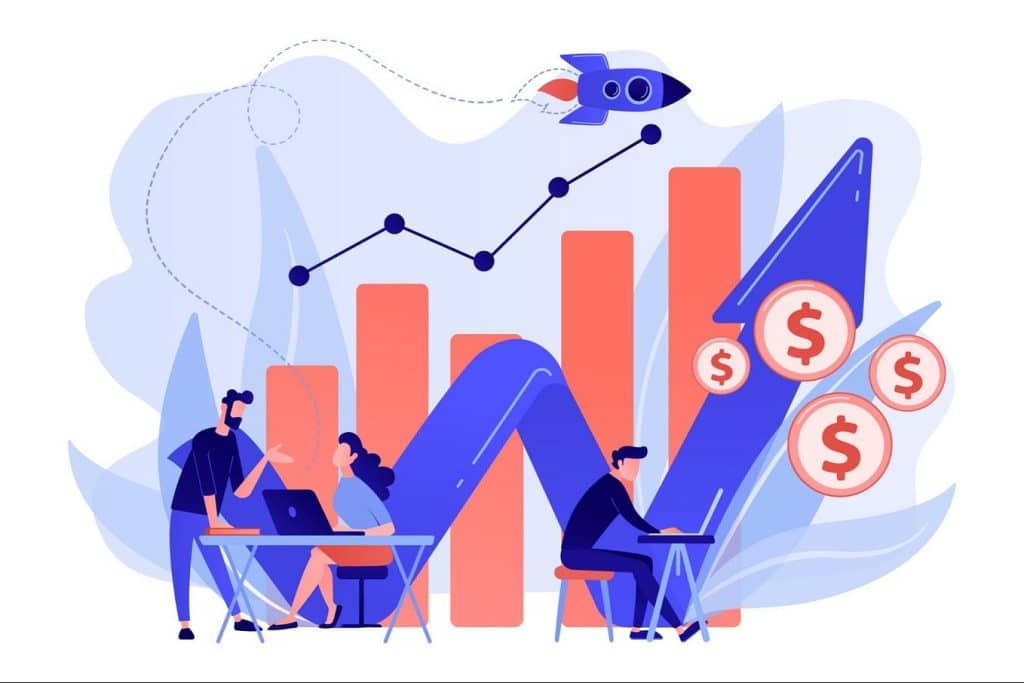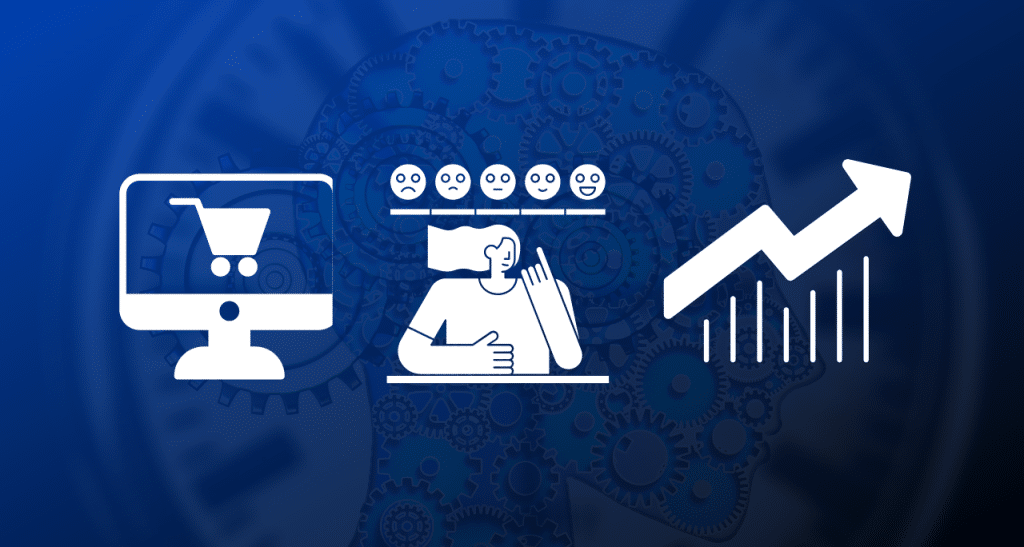Exploring the intricate web of psychological triggers that prompt visitors to transition from mere browsers to active buyers unveils a fascinating realm of consumer behavior analysis. Delving into the subconscious drivers that influence purchasing decisions can illuminate the path to enhancing conversion rates in eCommerce. By dissecting the underlying motivations that shape consumer choices, businesses can tailor their strategies to align seamlessly with these triggers, ultimately paving the way for increased sales and customer loyalty. The journey from browsing to buying is a nuanced process worth unraveling, offering a glimpse into the art of transforming casual visitors into committed buyers.
Understanding Conversion Strategy in eCommerce
To effectively convert visitors into buyers in the eCommerce realm, it’s crucial to comprehend the significance of emotional triggers in crafting conversion strategies. Understanding how emotions drive purchasing decisions can help businesses tailor their approaches to resonate with the target audience, ultimately leading to higher conversion rates. By strategically tapping into these emotional triggers, eCommerce platforms can foster a deeper connection with customers and drive more impactful sales outcomes.
The Role of Emotional Triggers in Conversion Strategy
Understanding the emotional triggers that influence consumer behavior in eCommerce is essential for crafting effective conversion strategies. By incorporating personalization tactics, businesses can create tailored experiences that resonate with customers on a deeper level, leading to increased sales conversion rates. Embracing the emotional aspect of consumer decision-making can foster stronger connections with potential buyers and ultimately drive business growth.
Personalization Tactics to Improve Sales Conversion
Implementing personalized tactics is essential for enhancing sales conversion rates in eCommerce by leveraging emotional triggers to connect with potential buyers on a deeper level. By understanding the customer behavior model and consumer behavior model, businesses can tailor their strategies to fit the customer buying journey. Personalization not only improves user experience but also taps into the psychology of consumer behavior, ultimately resulting in increased sales conversions.
Key Psychological Triggers in Sales Conversion
Understanding the key psychological triggers in sales conversion is essential for businesses looking to maximize their marketing efforts and drive revenue. By recognizing behavioral patterns and their influence on purchasing decisions, companies can tailor their strategies to better resonate with their target audience. These triggers play a significant role in guiding consumers through the buying process and ultimately converting them into loyal customers.
Behavioral Patterns and Their Impact on Sales Conversion
Understanding how behavioral patterns influence sales conversion is paramount in the eCommerce landscape. By recognizing the impact of persuasive language on consumer decision-making, businesses can tailor their messaging to effectively drive conversions. Utilizing key psychological triggers, such as language nuances, can significantly enhance the overall sales process.
Effective Use of Persuasive Language in eCommerce
Crafting compelling product descriptions that resonate with customers’ emotions is a fundamental aspect of leveraging persuasive language in eCommerce to drive sales. By using language that speaks directly to consumers’ desires and needs, businesses can create a sense of urgency and exclusivity, prompting quicker purchasing decisions. Well-crafted product descriptions that highlight benefits and evoke emotions can significantly impact conversion rates, turning browsers into loyal customers.

The Customer Behavior Model Explained
Understanding the customer behavior model is essential for businesses seeking to optimize their sales conversion strategies. By leveraging principles like scarcity and urgency, companies can create a sense of value and drive customers to make purchasing decisions swiftly. This model provides a framework for businesses to align their marketing tactics with consumer psychology, ultimately leading to increased conversion rates and improved sales performance.
Utilizing Scarcity and Urgency to Drive Sales
Understanding how scarcity and urgency influence consumer behavior is essential for driving sales in eCommerce. By creating a sense of limited availability or time-sensitive offers, businesses can leverage these psychological triggers to motivate customers to make purchases. Implementing strategies that tap into these cognitive biases can lead to increased conversion rates and higher sales revenue.
Cognitive Biases in Consumer Behavior
How do cognitive biases in consumer behavior influence purchasing decisions, and how can businesses leverage scarcity and urgency to drive sales effectively? Cognitive biases play a significant role in shaping consumer behavior, impacting their decision-making process. By understanding these biases, businesses can strategically implement scarcity and urgency tactics to drive sales successfully.
- Anchoring Bias: Consumers rely heavily on the first piece of information they receive.
- Loss Aversion: People are more motivated by the fear of losing than the prospect of gaining.
- Confirmation Bias: Individuals seek out information that confirms their existing beliefs.
- Availability Heuristic: Consumers make decisions based on readily available information.
How Consumer Behavior Models Influence Buying Decisions
Understanding how consumer behavior models influence buying decisions is paramount in developing successful marketing strategies. By recognizing the impact of social proof on consumer behavior, businesses can leverage testimonials, reviews, and endorsements to build trust and credibility with potential buyers. Utilizing these models effectively can lead to increased brand loyalty and higher conversion rates.
The Power of Social Proof in Consumer Behavior
By leveraging the concept of social proof, businesses can strategically influence consumer behavior models to drive purchasing decisions. Social proof plays a significant role in shaping consumer behavior and can be a powerful tool for businesses looking to increase conversions. Here are four ways in which social proof influences buying decisions:
- Customer Reviews: Positive reviews and testimonials can build trust and credibility.
- Social Media Mentions: Being talked about on social media platforms can create a buzz around a product.
- Influencer Endorsements: Recommendations from influencers can sway consumer opinions.
- User-Generated Content: Seeing real customers using a product can encourage others to make a purchase.

Mapping the Customer Buying Journey
Understanding the customer buying journey is essential for businesses looking to optimize their sales processes. By mapping out this journey, companies can identify key touchpoints and potential areas for improvement in the purchasing experience. This strategic approach enables businesses to create a seamless and efficient buying process that aligns with consumer expectations and ultimately drives conversions.
Creating a Seamless Customer Buying Journey
Crafting a smooth and efficient customer buying journey is paramount in the realm of eCommerce to ensure a seamless experience for potential buyers. To create a seamless customer buying journey, consider implementing the following strategies:
- Personalized Recommendations: Tailor product suggestions based on the customer’s browsing history.
- Streamlined Checkout Process: Simplify the steps required to complete a purchase to reduce friction.
- Responsive Customer Support: Offer real-time assistance to address any concerns or queries promptly.
- Multi-Channel Accessibility: Ensure that the buying journey is consistent across various platforms for a cohesive experience.
Leveraging Psychology for Better Conversion Rates
Understanding the psychological principles that underlie consumer decision-making is key to optimizing conversion rates in the eCommerce landscape. By leveraging these principles, businesses can tailor their strategies to align with the subconscious drivers that influence purchasing behavior. This strategic alignment can lead to more effective marketing campaigns and ultimately drive higher conversion rates.
Psychological Principles Behind Consumer Decision-Making
Consumer decision-making is intricately tied to psychological principles that can be leveraged to enhance conversion rates in eCommerce settings. Understanding the underlying psychology behind consumer behavior can significantly impact how businesses approach their marketing strategies. Here are some key psychological principles that influence consumer decision-making:
- Social Proof: People tend to follow the actions of others in uncertain situations.
- Scarcity: The fear of missing out drives individuals to make purchases quickly.
- Anchoring: Initial information provided can heavily influence subsequent decisions.
- Loss Aversion: Consumers are more motivated to avoid losses than to acquire gains.
Effective Sales Conversion Strategies for Online Stores
Understanding how to optimize product pages is a critical aspect of developing effective sales conversion strategies for online stores. By focusing on elements such as compelling product descriptions, high-quality images, and user-friendly layouts, businesses can enhance the overall shopping experience and increase the likelihood of conversions. Implementing these strategies can lead to improved conversion rates and ultimately drive higher sales volumes for eCommerce businesses.
Optimizing Product Pages for Higher Conversion Rates
Understanding customer data is key to crafting effective conversion strategies for online stores. By analyzing metrics such as bounce rates, time on page, and click-through rates, businesses can gain valuable insights into consumer behavior patterns. These insights can then be leveraged to optimize product pages and enhance the overall shopping experience for visitors.
Analyzing Customer Data for Better Conversion Strategy
To enhance sales conversion rates for online stores, delving into customer data analysis is instrumental in crafting effective strategies for optimizing product pages.
- Identify customer demographics and preferences
- Analyze purchasing behavior patterns
- Implement personalized recommendations based on data insights
- Continuously refine strategies using real-time data tracking
Enhancing User Experience to Boost Conversions
To effectively boost conversions, businesses need to focus on enhancing user experience, which plays a pivotal role in influencing purchasing decisions. Customer trust is a key factor that significantly impacts consumer behavior and drives sales outcomes. By prioritizing user-friendly interfaces, personalized interactions, and seamless navigation, companies can create a positive buying journey that fosters trust and encourages conversions.
Customer Trust and Its Influence on Purchasing Behavior
Establishing customer trust plays a fundamental role in influencing purchasing behavior and driving conversions. Visual elements integrated into the user experience can effectively enhance trust levels by providing a sense of credibility and professionalism. By strategically incorporating visual cues that resonate with consumers, businesses can create an environment that fosters trust and compels visitors to make purchasing decisions.

Visual Elements that Enhance User Experience
Enhancing user experience through strategic implementation of visual elements plays a pivotal role in cultivating customer trust and positively influencing purchasing behavior in the realm of eCommerce.
- Consistent branding across platforms
- High-quality product images and videos
- Intuitive website navigation
- Engaging visual storytelling
Comprehensive Software Development Solutions
Unlock the potential of digital transformation with our bespoke software development services, engineered to foster innovation, maximize efficiency, and catalyze business growth.
Conclusion
In conclusion, the integration of psychological triggers into eCommerce strategies is essential for converting visitors into buyers. By understanding consumer behavior models and mapping the customer buying journey, businesses can leverage psychology to enhance conversion rates. Through effective sales conversion strategies and a focus on improving user experience, online stores can unlock the potential for sustained growth and success.
How Can Businesses Effectively Measure the Success of Their Conversion Strategies in Ecommerce?
Businesses can measure the success of their conversion strategies in eCommerce by tracking key performance indicators (KPIs) such as conversion rate, average order value, customer lifetime value, and ROI. Utilizing analytics tools and A/B testing can provide insights for optimizing strategies.
What Are Some Lesser-Known Psychological Triggers That Can Be Used to Convert Visitors Into Buyers?
Understanding lesser-known psychological triggers like scarcity bias, social proof, and the anchoring effect can effectively convert visitors into buyers. By leveraging these triggers, businesses can tap into consumer behavior models to drive conversions and boost sales.
Are There Any Specific Consumer Behavior Models That Are Particularly Effective in Influencing Buying Decisions in Certain Industries?
Certain industries benefit from consumer behavior models like the Theory of Planned Behavior or the Technology Acceptance Model. These models help understand factors influencing buying decisions, enabling businesses to tailor strategies effectively.
How Can Businesses Adapt Their Sales Conversion Strategies for Different Target Demographics or Customer Segments?
Businesses can tailor sales conversion strategies for diverse target demographics by understanding unique preferences and behaviors. Segmenting customers based on demographics, psychographics, and purchase history allows for personalized marketing approaches, increasing relevance and engagement for higher conversion rates.



